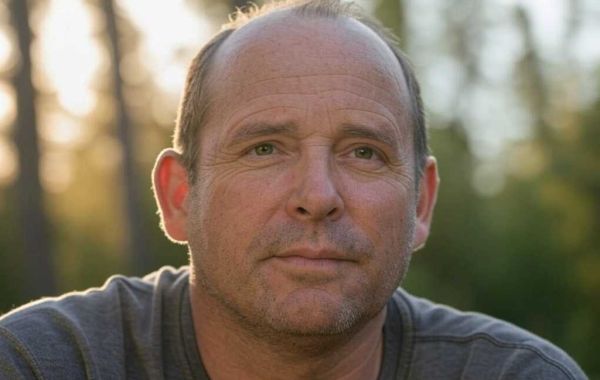Hair loss affects approximately 85% of men and 33% of women at some point in their lives, most commonly due to genetics or hormonal changes. However, research indicates that stress, diet, and medical conditions can also significantly contribute to hair loss. Treatments vary depending on the cause, with effective options including minoxidil, finasteride, and emerging therapies like AMP-303, which show great promise as of 2025.
Understanding Hair Loss
Definition and Normal Hair Shedding
Hair loss, medically referred to as alopecia, occurs when hair falls from the scalp or body in amounts that exceed normal daily shedding. Losing between 50 and 100 hair strands per day is considered normal, as hair naturally cycles through phases of growth (anagen), transition (catagen), and rest (telogen). At any given time, about 10–15% of hair is in the telogen or exogen phase. When hair loss surpasses this typical range or when regrowth is impaired, it becomes a medical and psychological concern.
Causes of Hair Loss
Hair loss results from a combination of genetic, hormonal, environmental, and lifestyle factors.
Genetic predisposition, primarily in the form of androgenetic alopecia, is the most common cause. This condition affects 85% of men and 33% of women and is linked to sensitivity to the hormone dihydrotestosterone (DHT), which causes hair follicles to shrink over time.
Hormonal changes also significantly impact hair growth. Events such as pregnancy, childbirth, menopause, and thyroid disorders can interrupt the hair cycle, resulting in temporary or sometimes permanent hair loss.
Stress, both physical and emotional, can trigger telogen effluvium, a condition where large numbers of hairs enter the resting phase and shed rapidly, often several months after a stressful event.
Diet and lifestyle choices are additional factors. Deficiencies in nutrients like zinc, iron, and protein can weaken hair structure. Poor habits such as smoking, insufficient sleep, and lack of exercise exacerbate hair loss, particularly in individuals who already have a genetic predisposition.
Medical conditions such as thyroid disease, autoimmune disorders, and infections can also cause hair loss. Treatments like chemotherapy frequently lead to anagen effluvium, a sudden and severe shedding during the growth phase.
Finally, hair care practices can have a profound effect. Frequent use of harsh chemicals, heat styling, and tight hairstyles can cause traction alopecia, a condition that can become permanent if not addressed early.
Types of Hair Loss
Different forms of hair loss exist, each with its own characteristics.
- Androgenetic alopecia, the most prevalent type, presents as a receding hairline in men and diffuse thinning across the scalp in women.
- Alopecia areata is an autoimmune condition where the immune system attacks hair follicles, leading to patchy bald spots. It affects up to 6.8 million people in the United States.
- Telogen effluvium is a temporary condition marked by rapid shedding following stress, hormonal changes, or illness. Fortunately, this form of hair loss is often reversible.
- Traction alopecia arises from prolonged tension on the hair follicles, typically due to tight hairstyles such as braids or ponytails. Without intervention, this can lead to permanent hair loss.
- Anagen effluvium is characterized by the rapid loss of hair during its growth phase, most often as a result of chemotherapy or radiation therapy.
Treatments for Hair Loss
Medications
Among the first-line treatments for hair loss are topical and oral medications. Minoxidil is a topical solution available as a serum or foam, commonly used to stimulate hair growth. It is effective for both men and women experiencing pattern baldness. Finasteride is an oral medication that works by inhibiting DHT production. It has shown significant effectiveness in treating male pattern baldness but is generally not recommended for women due to its side effect profile.
Therapies
Beyond medication, therapeutic interventions offer additional options. Platelet-Rich Plasma (PRP) therapy involves extracting a patient's blood, concentrating the platelets, and injecting them into the scalp to stimulate follicle growth. Low-Level Laser Therapy (LLLT) employs red and violet light to improve scalp circulation and reduce inflammation, promoting denser hair growth. Both therapies are minimally invasive and can be used in combination with other treatments.
Surgical Options
For individuals seeking a permanent solution, hair transplantation is a viable option. Techniques such as Follicular Unit Extraction (FUE) offer natural-looking results with minimal scarring. Hair transplant procedures are increasingly popular, with the market expanding by an estimated 6.72% annually.
Natural Remedies
Some people also explore natural remedies, although results vary. Essential oils such as lavender, peppermint, and rosemary may promote scalp health when used regularly. Additionally, aloe vera and coconut oil are often used to nourish the scalp and reduce inflammation, forming part of holistic hair care routines.
New Advances in 2025
Emerging technologies are offering new hope. AMP-303, developed at UC Irvine, has shown over 15% hair regrowth after a single cycle, a major breakthrough for androgenetic alopecia patients. JAK inhibitors like baricitinib and ruxolitinib, initially designed for autoimmune diseases, have been approved for treating severe alopecia areata and are demonstrating promising results. Research into MicroRNA Therapy, particularly targeting miR-205, is showing early potential for rejuvenating aging hair follicles. Meanwhile, Exosome Therapy using products like Calecim® is gaining popularity for promoting hair regrowth without the side effects often associated with pharmaceuticals.
Prevention Strategies
Although not all forms of hair loss can be prevented, adopting healthy habits can greatly minimize the risk.
Maintaining a diet rich in proteins, B vitamins, zinc, iron, and healthy fats is essential for supporting healthy hair growth. Foods like leafy greens, eggs, seeds, and nuts should be regular parts of the diet.
Managing stress through activities like yoga, meditation, and outdoor exercise can prevent stress-induced hair shedding. Gentle hair care is equally important. Avoiding harsh chemicals, minimizing heat styling, and choosing loose hairstyles can protect hair integrity. A balanced lifestyle that includes adequate sleep, limited alcohol consumption, and avoiding smoking supports both overall health and hair vitality.
When to See a Dermatologist
It is advisable to seek professional help if you notice unusual hair loss patterns. Warning signs include losing more than 125 hairs per day, experiencing sudden or patchy hair loss, or noticing associated symptoms such as itching, redness, or scaling of the scalp. Dermatologists can perform diagnostic tests such as hair pull tests, blood panels, and scalp biopsies to determine the underlying cause and recommend a personalized treatment plan. Early intervention is often key to preserving hair density and achieving the best possible outcomes.
Statistics on Hair Loss: Prevalence and Economic Impact
Hair loss is a widespread condition affecting both men and women across the globe. Studies show that 85% of men and 33% of women will experience some degree of hair loss during their lives, with signs appearing as early as age 30 in 25% of men and 12% of women.
The economic impact of hair loss is substantial. In 2022, the global hair restoration market was valued at USD 52.37 billion and is expected to reach USD 88.18 billion by 2030. Regional studies indicate that countries like Spain (44.50%), Italy (44.37%), and France (44.25%) have the highest prevalence of male baldness.
Recent Research and Breakthroughs (2025)
Advancements in 2025 are reshaping the future of hair loss treatments.
The AMP-303 study from UC Irvine revealed measurable hair regrowth following a single treatment cycle, potentially transforming androgenetic alopecia therapy. Simultaneously, research into MicroRNA Therapy, specifically the role of miR-205, suggests that new topical treatments to reverse baldness may soon become available.
Exosome Therapy using stem-cell-derived vesicles like those found in Calecim® has demonstrated encouraging results, especially in treatment-resistant cases, offering a regenerative, side-effect-free approach.
Meanwhile, JAK inhibitors, already approved for severe alopecia areata, are showing expanding potential for broader hair loss applications.
Key Citations
A Complete Guide to Hair Loss: Causes, Treatments, Prevention Strategies (https://www.hairmdindia.com/blog/a-complete-guide-to-hair-loss-causes-treatments-and-prevention-strategies/)
Hair Loss Statistics 2025 For Journalists (https://scandinavianbiolabs.com/blogs/journal/hair-loss-statistics)
Hair Loss: Causes, Treatments and Prevention Options (https://my.clevelandclinic.org/health/diseases/21753-hair-loss)
The Latest Advances In Hair Loss Treatments In 2025 (https://www.pharmacyplanet.com/blog/post/the-latest-advances-in-hair-loss-treatments-in-2024)
UC Irvine Scientist’s Breakthrough Study (https://www.bio.uci.edu/uc-irvine-scientists-breakthrough-study-reveals-new-hope-for-hair-loss-treatment/)
Could We See a New Dawn for Hair Loss Treatments? (https://www.labiotech.eu/in-depth/hair-loss-drugs-innovation/)
Statistics: 47 Countries with the Most Bald Men (2025) (https://medihair.com/en/statistics-47-countries-with-the-most-bald-men/)
Promising New Hair Loss Treatment Using MicroRNA (https://www.healthline.com/health-news/microrna-breakthrough-hair-loss-treatment)
Cutting-Edge Hair Restoration Techniques in 2025 (https://bioinformant.com/hair-restoration-techniques/)







